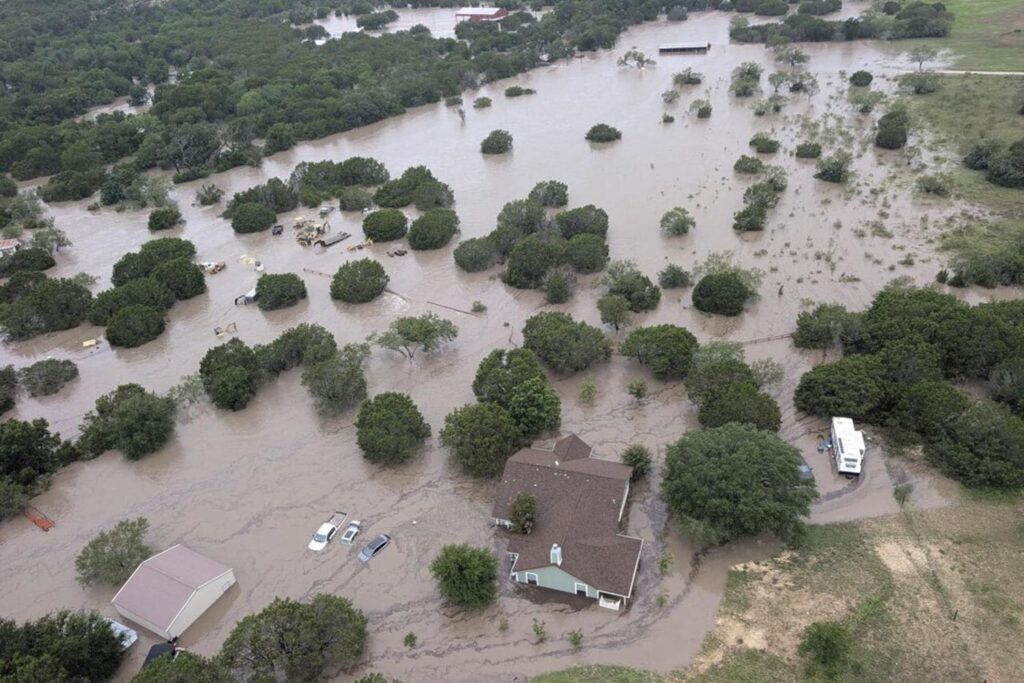As climate disasters escalate in frequency and intensity, recent events such as the devastating floods in Texas are outpacing the ability of scientific research to fully understand and predict their impacts. The Energy Mix examines how rapidly evolving weather extremes are challenging existing climate models and response strategies, underscoring an urgent need for faster, more adaptive approaches to climate science and disaster management.
Climate Disasters Accelerate as Texas Floods Expose Gaps in Scientific Response
Recent flooding events across Texas have laid bare the widening gap between the pace of climate-related disasters and the capacity of scientific frameworks to predict, respond, and mitigate their impacts effectively. Infrastructure designed decades ago struggles to withstand the intensity and frequency of deluges that climate change now amplifies. Emergency response teams, overwhelmed by the scale of destruction, face significant challenges in deploying timely aid, while state agencies grapple with outdated data models that fail to capture rapidly shifting weather patterns.
Experts emphasize several critical areas where scientific response lags behind environmental realities:
- Hydrological modeling: Current prediction systems lack the granularity to forecast flash flooding on an urban scale.
- Infrastructure resilience: Aging levees, drainage systems, and energy grids are increasingly prone to failure under extreme conditions.
- Data integration: Limited real-time sharing between local, state, and federal agencies hinders coordinated action.
| Factor | Current Status | Needed Improvement |
|---|---|---|
| Flood Prediction Accuracy | Moderate, lacks urban precision | Enhanced localized modeling |
| Response Times | Delayed due to communication gaps | Integrated agency protocols |
| Infrastructure Durability | Aging and vulnerable | Climate-adaptive redesign |
The provided section highlights critical challenges faced by Texas in dealing with recent flooding events, emphasizing the gap between the increasing severity of climate-related disasters and the current scientific and infrastructural capacity to manage them effectively.
Summary:
- Growing Challenges: Texas is experiencing flooding at intensities and frequencies beyond what its decades-old infrastructure and scientific models were designed to handle.
- Key Areas of Concern:
– Hydrological Modeling: Existing systems lack detailed precision, particularly for predicting flash floods at urban scales.
– Infrastructure Resilience: Aging levees, drainage, and energy systems are vulnerable to failure under extreme weather conditions.
– Data Integration: Limited real-time data sharing hampers coordinated emergency responses across agencies.
- Improvements Needed:
– Developing enhanced localized flood prediction models.
– Integrating communication and protocols among local, state, and federal response teams.
– Redesigning infrastructure to be adaptive to climate impacts.
Table Recap:
| Factor | Current Status | Needed Improvement |
|————————–|———————————-|——————————|
| Flood Prediction Accuracy| Moderate, lacks urban precision | Enhanced localized modeling |
| Response Times | Delayed due to communication gaps| Integrated agency protocols |
| Infrastructure Durability| Aging and vulnerable | Climate-adaptive redesign |
Overall:
The gap between environmental realities-amplified by climate change-and scientific and infrastructural preparedness endangers effective flood management and disaster response in Texas. Addressing these key areas with updated models, resilient infrastructure, and better data coordination is essential to improve outcomes for communities facing future floods.
Challenges Facing Researchers in Predicting and Mitigating Rapid Climate Events
Unpredictability remains a significant obstacle as rapid climate events intensify at unprecedented rates. Researchers face the daunting task of gathering real-time data across vast, often inaccessible regions, while climate models struggle to incorporate the intricate, nonlinear interactions of atmospheric, oceanic, and terrestrial systems. Additionally, the sheer velocity at which these disasters evolve demands faster computational methods and more agile forecasting frameworks-elements science is still racing to develop. The lack of comprehensive historical data further impedes the refinement of predictive models, leaving policymakers and emergency responders grappling with uncertainty and delayed action.
Compounding these difficulties are technological and institutional limitations. Many forecasting tools remain reliant on fixed observational networks that cannot fully capture localized phenomena such as flash floods or microbursts. Meanwhile, cross-disciplinary collaboration is essential yet hindered by fragmented data standards and resource constraints. The table below highlights some key barriers that researchers are actively addressing:
| Challenge | Impact | Potential Solution |
|---|---|---|
| Data Scarcity | Inaccurate predictions | Enhanced remote sensing |
| Computational Limits | Slow model updates | High-performance computing |
| Communication Gaps | Delayed response | Integrated disaster platforms |
| Fragmented Research | Duplicated efforts | Open data initiatives |
Urgent Policy Shifts Needed to Enhance Climate Resilience and Energy Infrastructure
As extreme weather events intensify at an unprecedented rate, current frameworks for climate resilience and energy infrastructure are proving inadequate. The rapid escalation of disasters like the Texas floods exposes critical vulnerabilities in the grid and community preparedness. Without decisive policy interventions, these gaps will widen, threatening the reliability of energy systems and the safety of millions. Experts emphasize the necessity for a paradigm shift that integrates adaptive technologies and proactive planning.
Key areas requiring immediate action include:
- Investment in decentralized and renewable energy sources to reduce dependency on fragile centralized grids.
- Mandatory resilience standards for energy infrastructure design, tailored for regional climate risks.
- Real-time monitoring systems coupled with predictive analytics to anticipate and mitigate outages.
- Enhanced collaboration between federal, state, and local authorities to streamline emergency response and resource allocation.
| Policy Focus | Current Status | Recommended Shift |
|---|---|---|
| Grid Modernization | Underfunded | Accelerate smart grid investments |
| Emergency Preparedness | Fragmented | Implement unified regional frameworks |
| Climate Adaptation | Reactive | Adopt forward-looking risk assessments |
Concluding Remarks
As climate disasters like the recent Texas floods accelerate beyond scientific predictions, the urgency for adaptive strategies grows ever more pressing. Bridging the gap between rapidly evolving climate realities and the pace of research is critical to safeguarding communities and infrastructure. Moving forward, enhanced collaboration between scientists, policymakers, and emergency responders will be essential to develop timely, effective responses in the face of an increasingly volatile climate. The challenge is clear: to keep pace with a changing world, science and society must move faster together.
